Vibration Reduction and Explosion Control Investigation for an Ultra-Shallow Buried Tunnel under Crossing Buildings Based on HHT Analysis
Abstract
:1. Introduction
2. Target Tunnel
2.1. Blasting Scheme for Tunnel Construction in Non-Vibration Reduction Section
2.2. Blasting Vibration Monitoring Method
2.2.1. Test Instrument
2.2.2. Detector Layout
2.2.3. Monitoring Results
3. Blasting Vibration Analysis Based on HHT
3.1. Implementation of HHT Time−Frequency Analysis Method
- The upper envelope and lower envelope of the original signal are obtained based on the local extreme value point. Subtract the mean of the upper and lower envelopes from the original sequence and obtain . If it satisfies the IMF condition, the single () is stored as the first IMF component , otherwise the original single is replaced with and the above process is repeated until the IMF component appears.
- The IMF component is removed from the original signal, and the residual signal is further analyzed to find the next IMF component, which becomes the new primary signal. This occurs until the remaining sequence becomes a monotonic function or is less than a certain value.
- For each IMF component, Hilbert transform is performed:where represents the Cauchy principal value.
3.2. HHT of Bursting Vibration Signals
4. Simulation and Analysis of Blasting Vibration Reduction
4.1. Development of FEM
4.1.1. Modeling and Meshing
4.1.2. Parameter Selection of FEM
4.1.3. Model Validation
4.2. Reducing Vibration by Shortening Footage
4.2.1. Reduced Single-Cycle Footage Scheme Design
4.2.2. Simulation Results and Analysis
4.3. Field Test of 0.6 m Footage
4.3.1. Field Test Description
4.3.2. Test Vibration Results and Analysis
5. Improved Scheme of Blasting
5.1. Improved Scheme of 0.8 m Footage
5.2. Improved Scheme by Wave Interference Vibration Reduction
6. Conclusions
Author Contributions
Funding
Institutional Review Board Statement
Informed Consent Statement
Data Availability Statement
Conflicts of Interest
References
- Yang, S.Q.; Liao, X.K.; Liu, B.C. Default of the judging standard of blasting vibration safety abstract. Explos. Shock. Waves 2021, 21, 223–228. [Google Scholar]
- Wang, X.G.; Yu, Y.L. On several problems of safety criterion for blasting vibration. Eng. Blasting 2001, 7, 88–92. [Google Scholar]
- Sun, Q.; Wang, M.X.; Xu, Y.S.; Liu, G.Y. HHT analysis and application of blasting vibration in rock roadway excavation. Eng. Blasting 2016, 22, 1–7. [Google Scholar]
- Huang, N.E.; Shen, Z.; Long, S.R.; Wu, M.C.; Shih, H.H.; Zheng, Q.; Yen, N.-C.; Tung, C.C.; Liu, H.H. The empirical mode decomposition and the Hilbert spectrum for nonlinear and non-stationary time series analysis. Proc. Math. Phys. Eng. Sci. 1998, 454, 903–995. [Google Scholar] [CrossRef]
- Wu, H.; Gong, M.; Zhao, Q.; Wu, X.; Liu, X. Vibration energy comparison helps identify formation time of new free surface in urban tunnel blasting. Appl. Sci. 2022, 12, 10061. [Google Scholar] [CrossRef]
- Ma, C.Y.; Wu, L.; Sun, M.; Yuan, Q. Time-Frequency analysis and application of a vibration signal of tunnel excavation blasting based on CEEMD-MPE-HT. Shock. Vib. 2021, 2021, 6672942. [Google Scholar] [CrossRef]
- Song, X.; Gao, W.; Li, J.; Wang, L.; Cao, X. Analysis of Fractal Features of Blasting Vibration Signal Based on EEMD Decomposition. IOP Conf. Ser. Earth Environ. Sci. 2021, 719, 032038. [Google Scholar] [CrossRef]
- Hou, S.; Xie, F.; Tian, S.; Liang, S. Effects of Blasting Vibrations on an Arch in the Jiaohuayu Tunnel Described by Energy Response Spectrum Analysis. Appl. Sci. 2022, 12, 11395. [Google Scholar] [CrossRef]
- Chen, Q.; Wang, H.T.; Hu, G.Z.; Li, X.H.; Li, K.X.; Pang, C. Monitoring and controlling technology for blasting vibration induced by tunnel excavation. Rock Soil Mech. 2005, 26, 964–967. [Google Scholar]
- Wu, X.D.; Gong, M.; Wu, H.J.; Hu, G.F.; Wang, S.J. Vibration reduction technology and the mechanisms of surrounding rock damage from blasting in neighborhood tunnels with small clearance. Int. J. Min. Sci. Technol. 2023, 33, 625–637. [Google Scholar] [CrossRef]
- Jia, B.; Zhou, L.; Cui, J.; Chen, H. Attenuation model of tunnel blast vibration velocity based on the influence of free surface. Sci. Rep. 2021, 11, 21077. [Google Scholar] [CrossRef] [PubMed]
- Zhang, Y.; Zhang, J.; Wang, S.; Chen, Y. Controlling vibration speed in tunnel excavation using fine blasting method under complex environmental conditions. Shock. Vib. 2021, 2021, 6060485. [Google Scholar] [CrossRef]
- Gao, W.; Liu, Z.; Wang, Y.; Yan, Z.; Zhang, Z. Study on optimization of delay method of wedge cut blasting in tunnel. Shock. Vib. 2021, 2021, 1676269. [Google Scholar] [CrossRef]
- Song, X.L.; Gao, W.X.; Ji, J.M.; Ye, M.B.; Zhang, D.J. Investigation of the fractal characteristics of cumulative damage to tunnel surrounding rock under blasting vibration. IOP Conf. Ser. Earth Environ. Sci. 2020, 570, 042036. [Google Scholar]
- Li, S.L.; Liang, S.F.; Lu, J.W. Study on Internal Vibration Law and Vibration Reduction of Xiaoxiku Tunnel Blasting. Geofluids 2022, 2022, 7650784. [Google Scholar] [CrossRef]
- Guan, X.M.; Guo, C.X.; Mou, B.; Shi, L.L. Tunnel millisecond-delay controlled blasting based on the delay time calculation method and digital electronic detonators to reduce structure vibration effects. PLoS ONE 2019, 14, e0212745. [Google Scholar] [CrossRef] [PubMed]
- Langefors, U.; Kihlström, B.; Kenkyūjo., K.S. The Modern Technique of Rock Blasting; Almquist and Wiksell: Stockholm, Sweden, 1963. [Google Scholar]
- Zhang, B.; Zhou, Y.; Zhang, X.; Zhang, Z.; Wang, Z.; Wu, Y. Mechanism and Application of Blasting Technology Using Phase-Difference Vibration Mitigation on Adjacent Railway Tunnel. Shock. Vib. 2022, 2022, 3836086. [Google Scholar] [CrossRef]
- Iwano, K.; Hashiba, K.; Nagae, J.; Fukui, K. Reduction of tunnel blasting induced ground vibrations using advanced electronic detonators. Tunn. Undergr. Space Technol. 2020, 105, 103556. [Google Scholar] [CrossRef]
- Lin, D.N.; Chen, S.R.; Liu, Y.P. Characteristic and Shock Damping of Blast Vibration in a Certain Open Pit. Strateg. Study CAE 2006, 8, 73–77, 88. [Google Scholar]
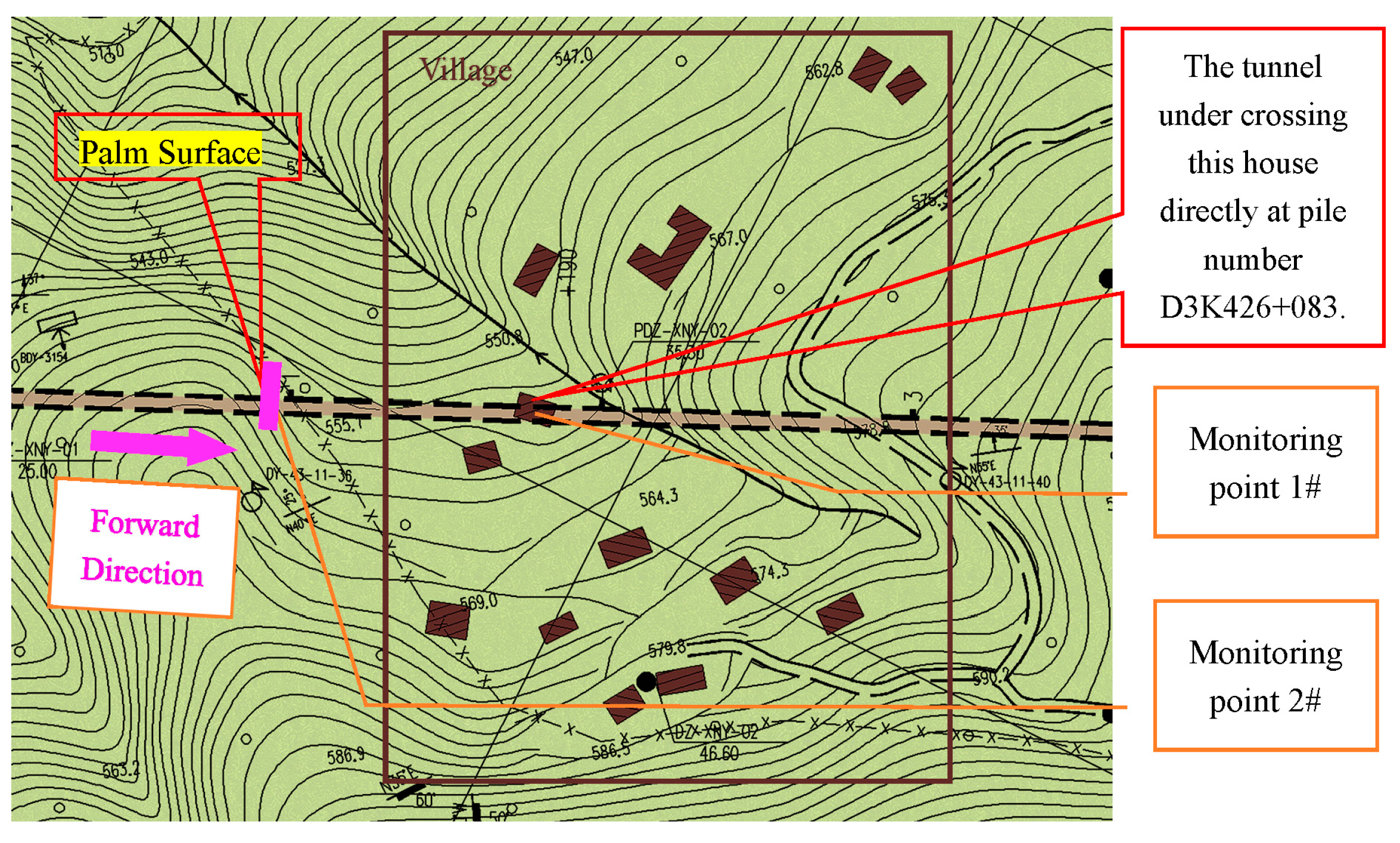

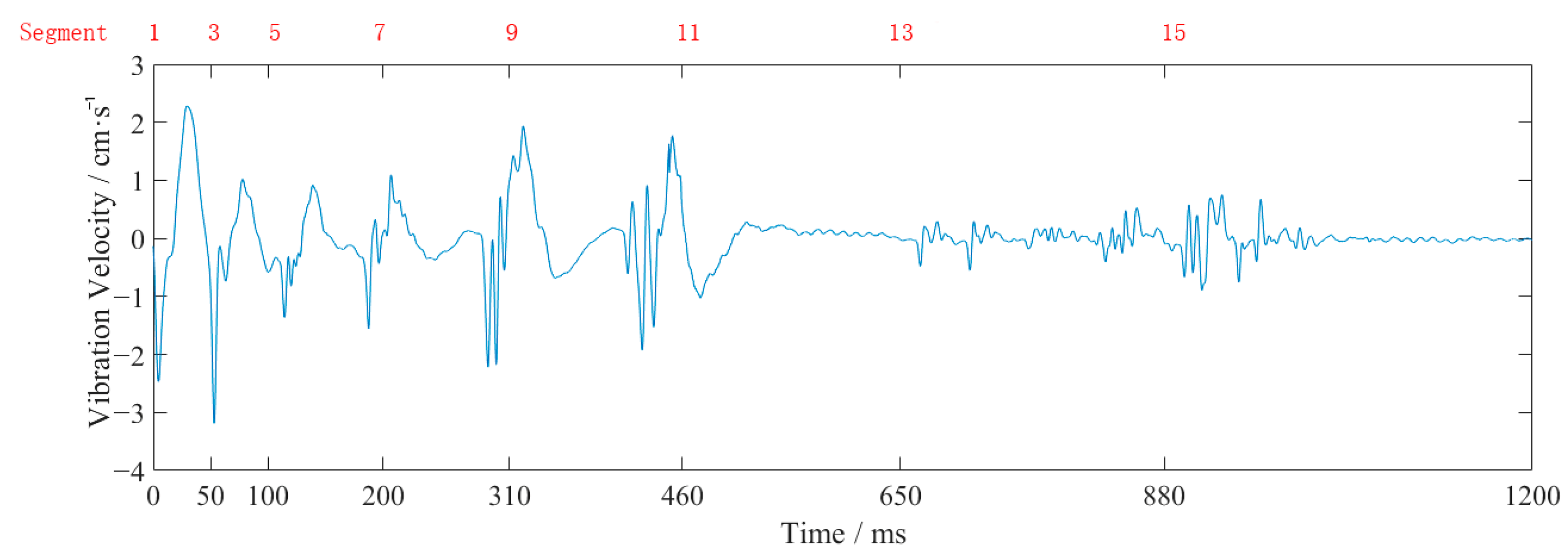

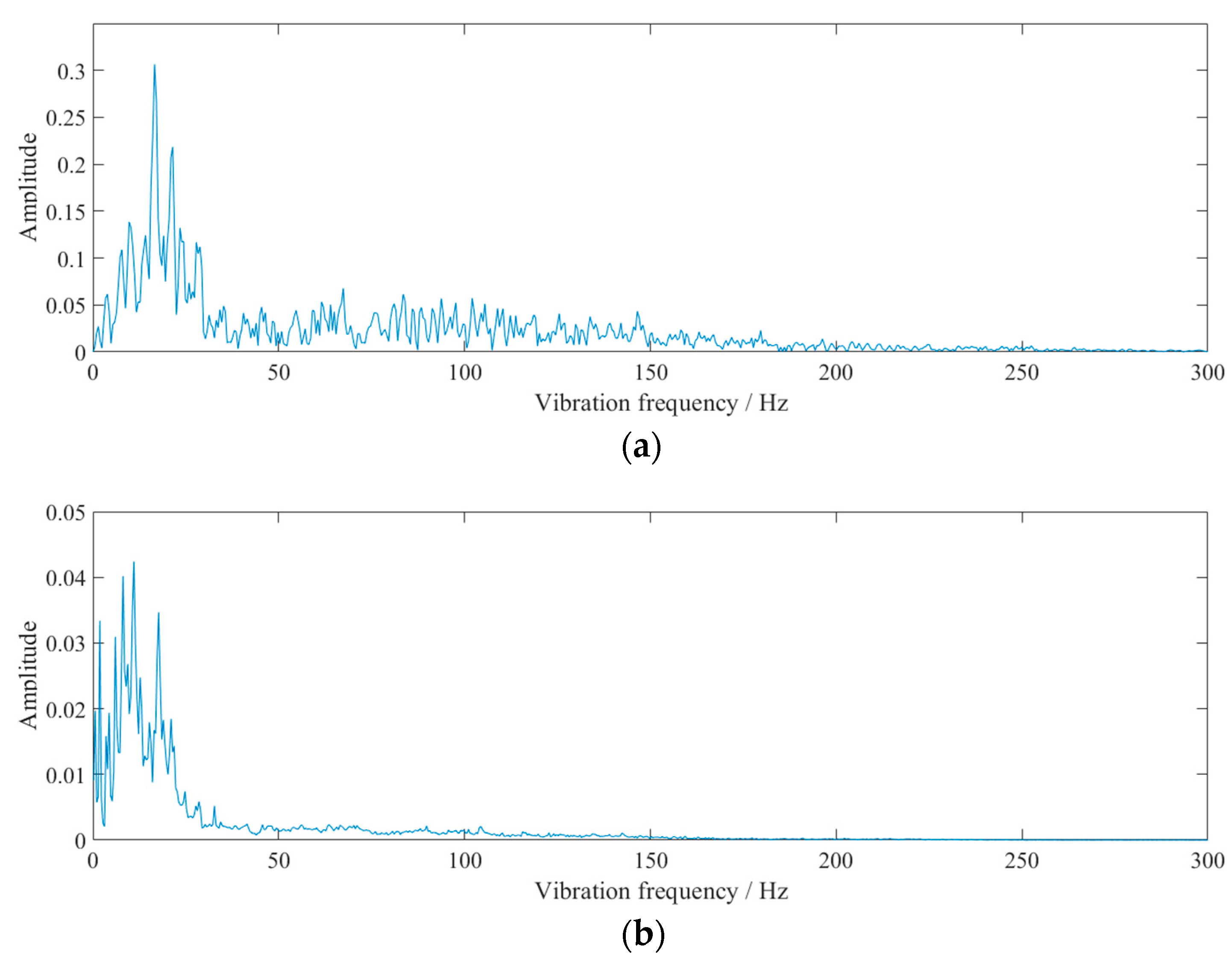

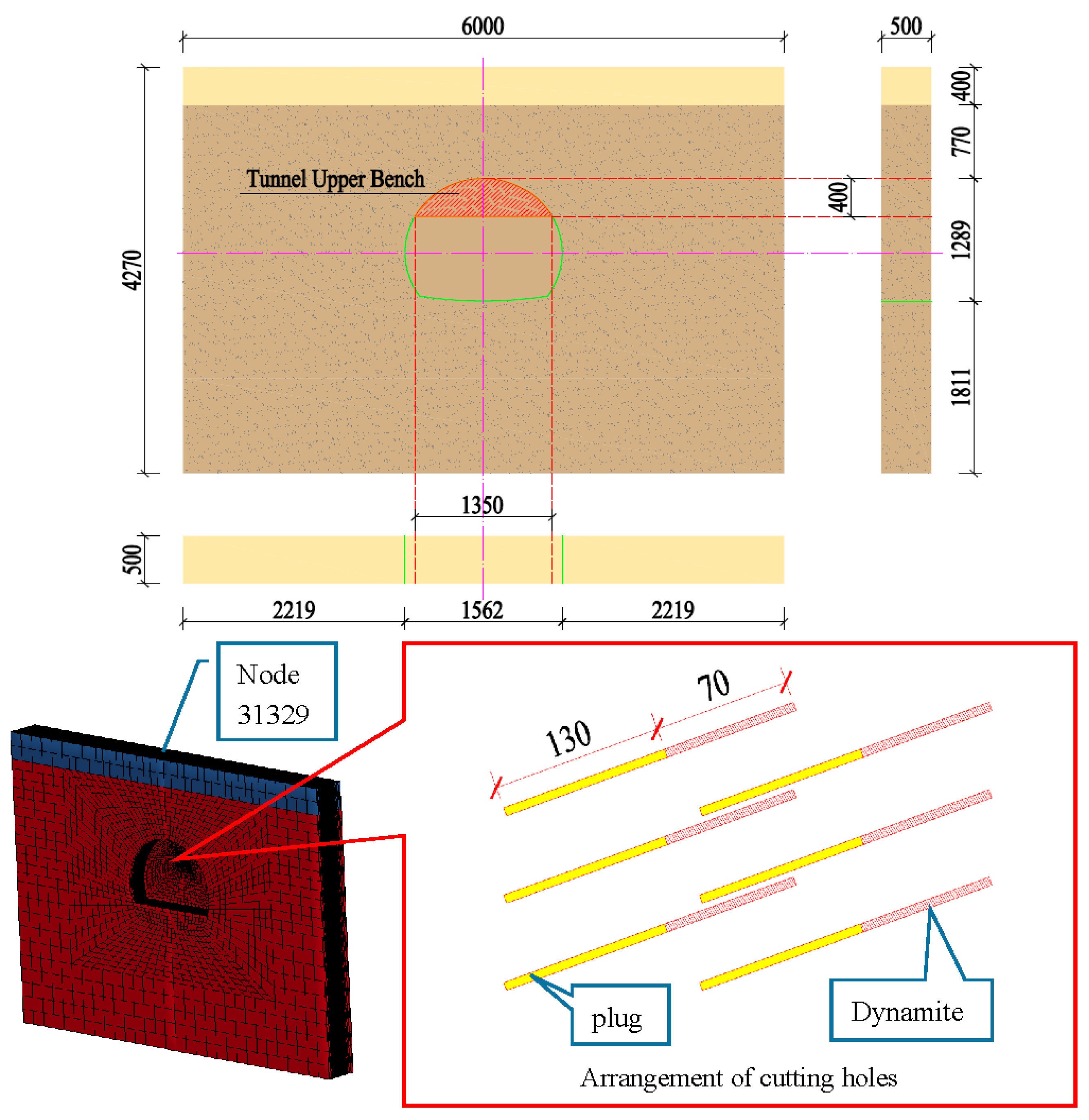

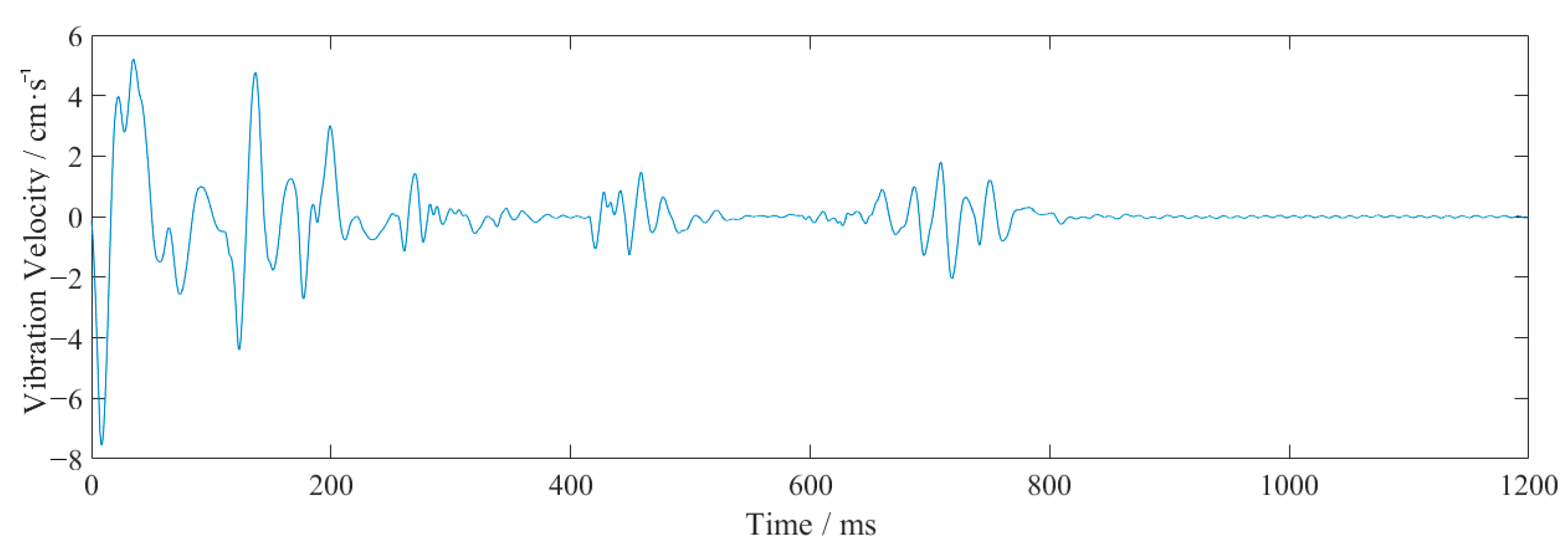
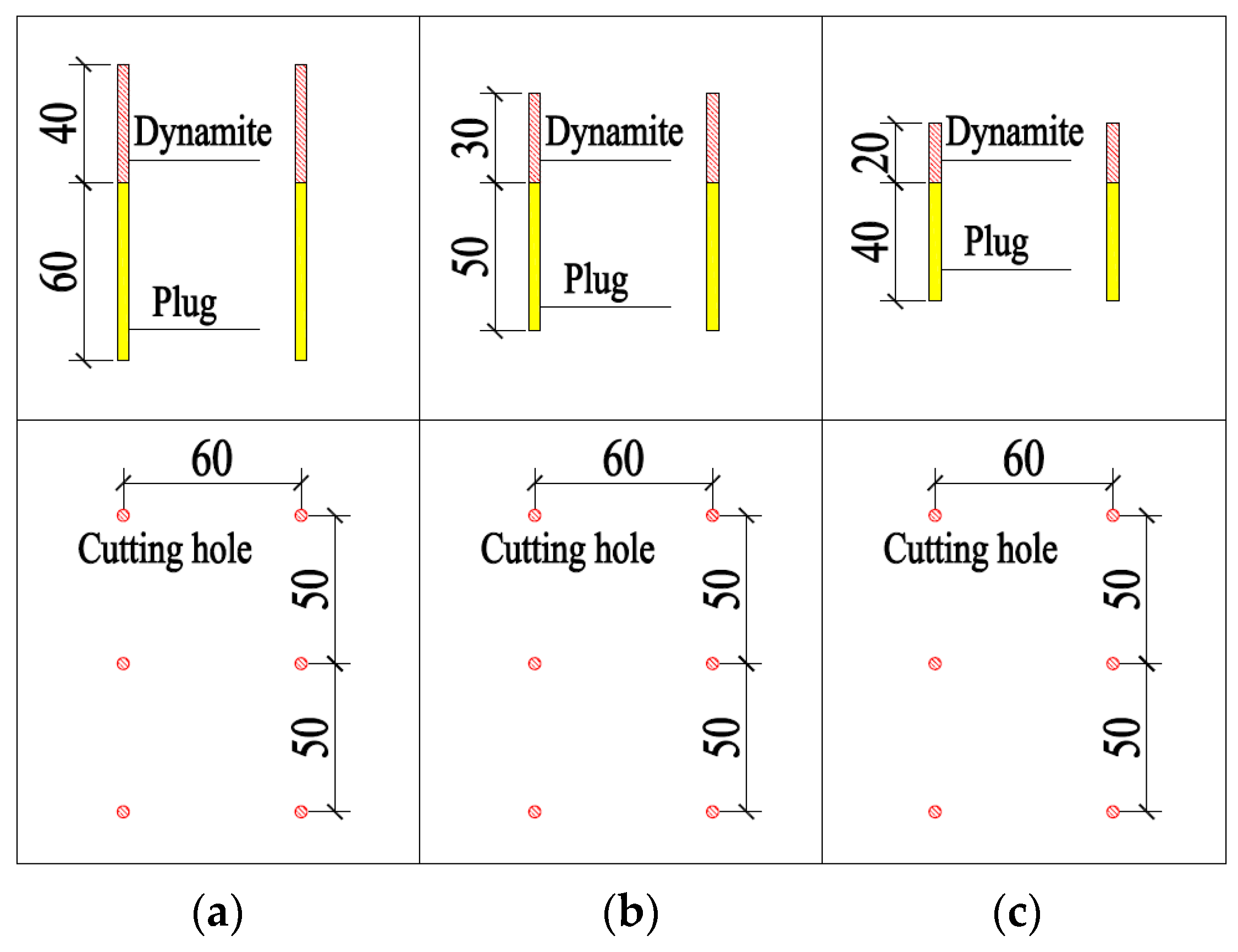
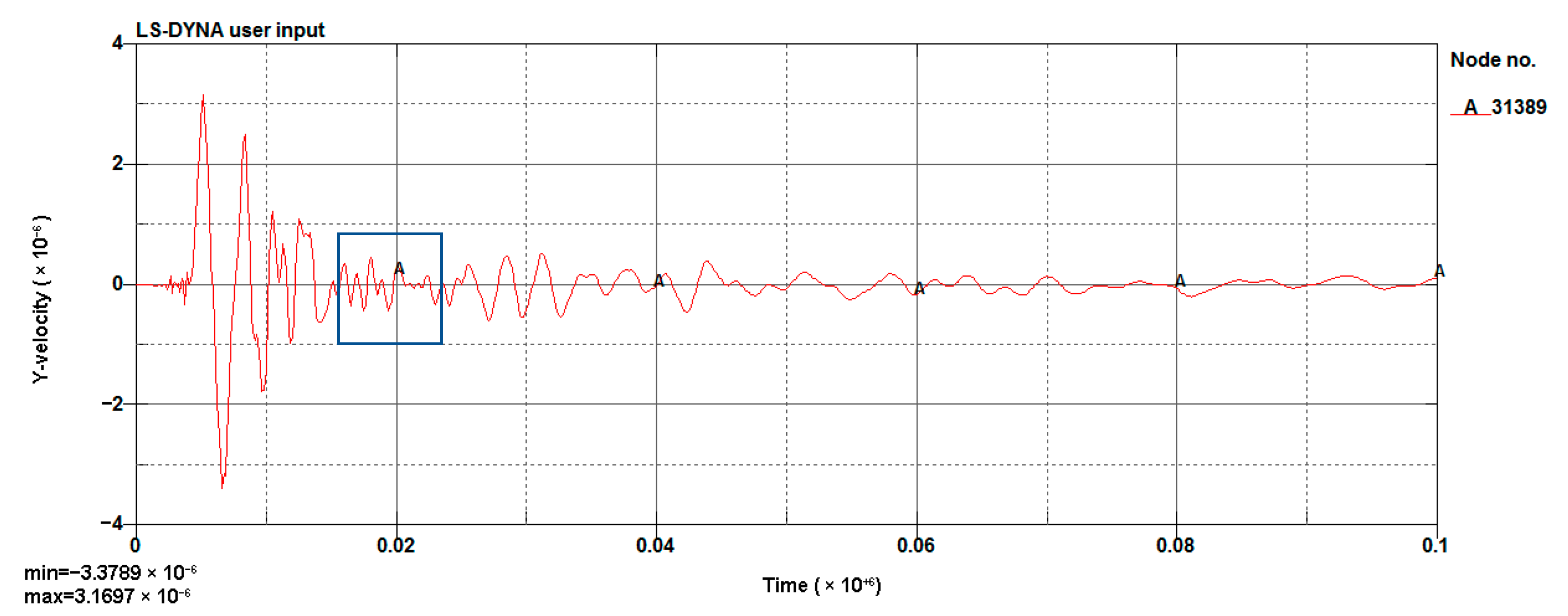

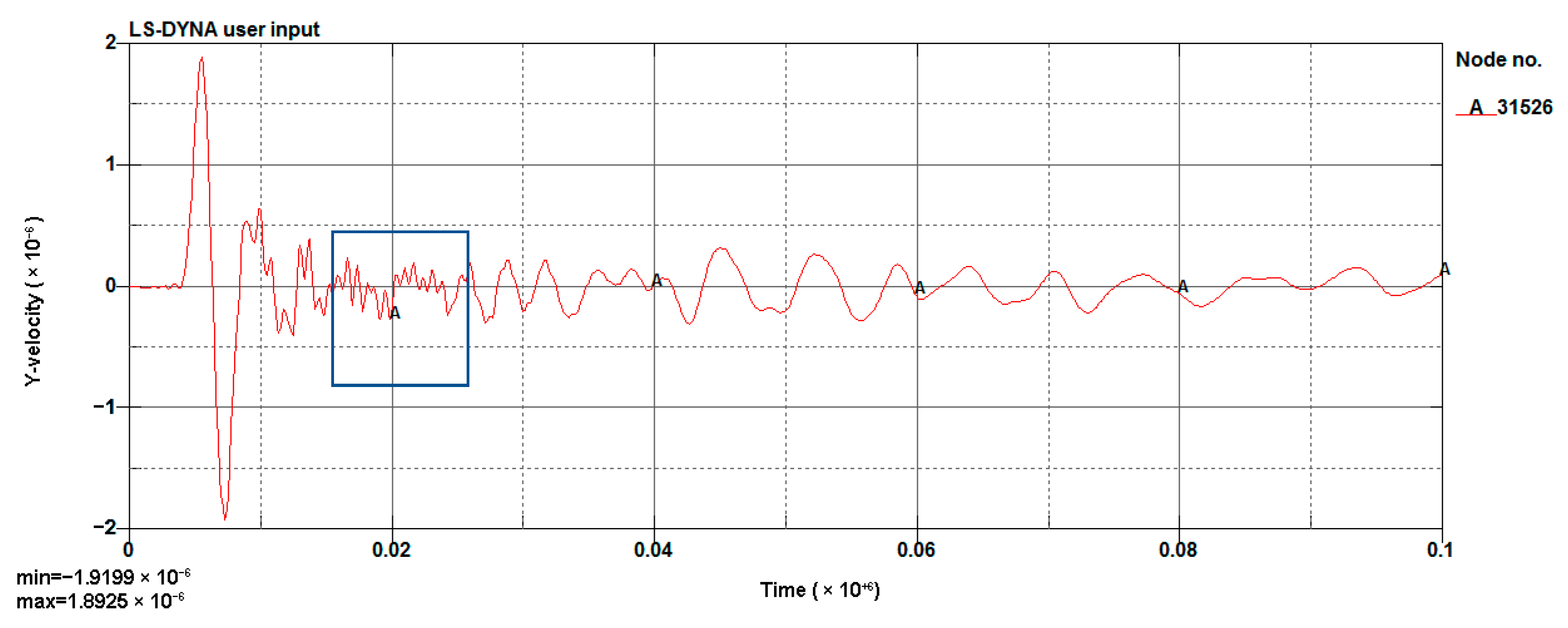
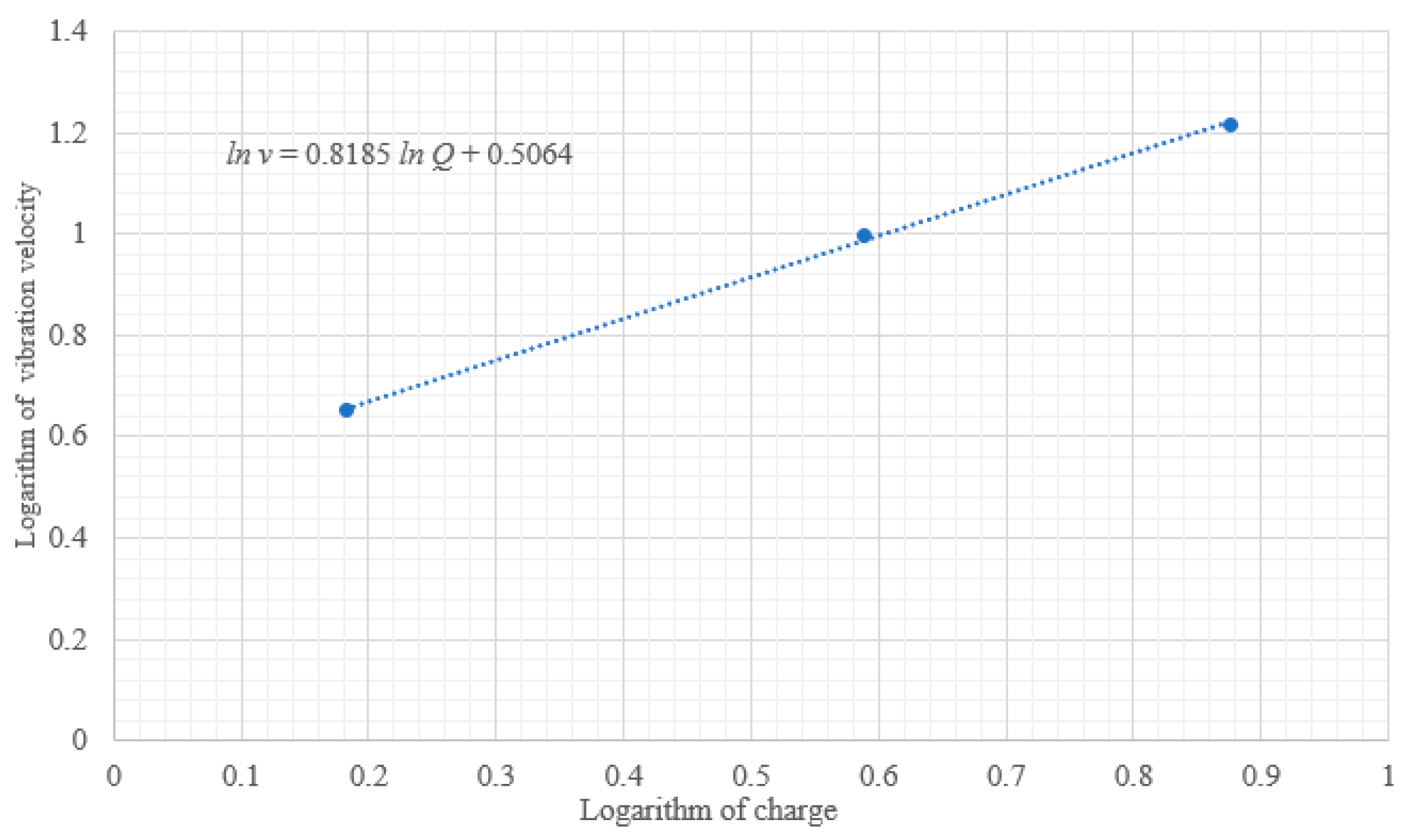
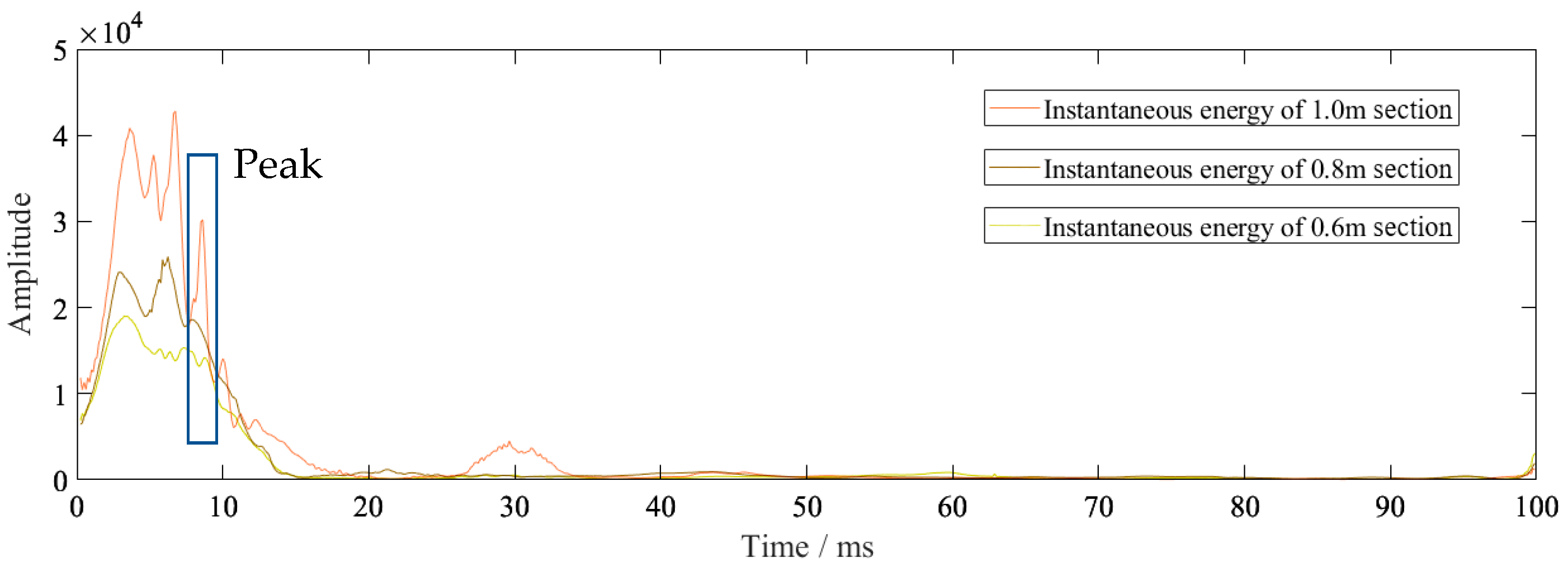
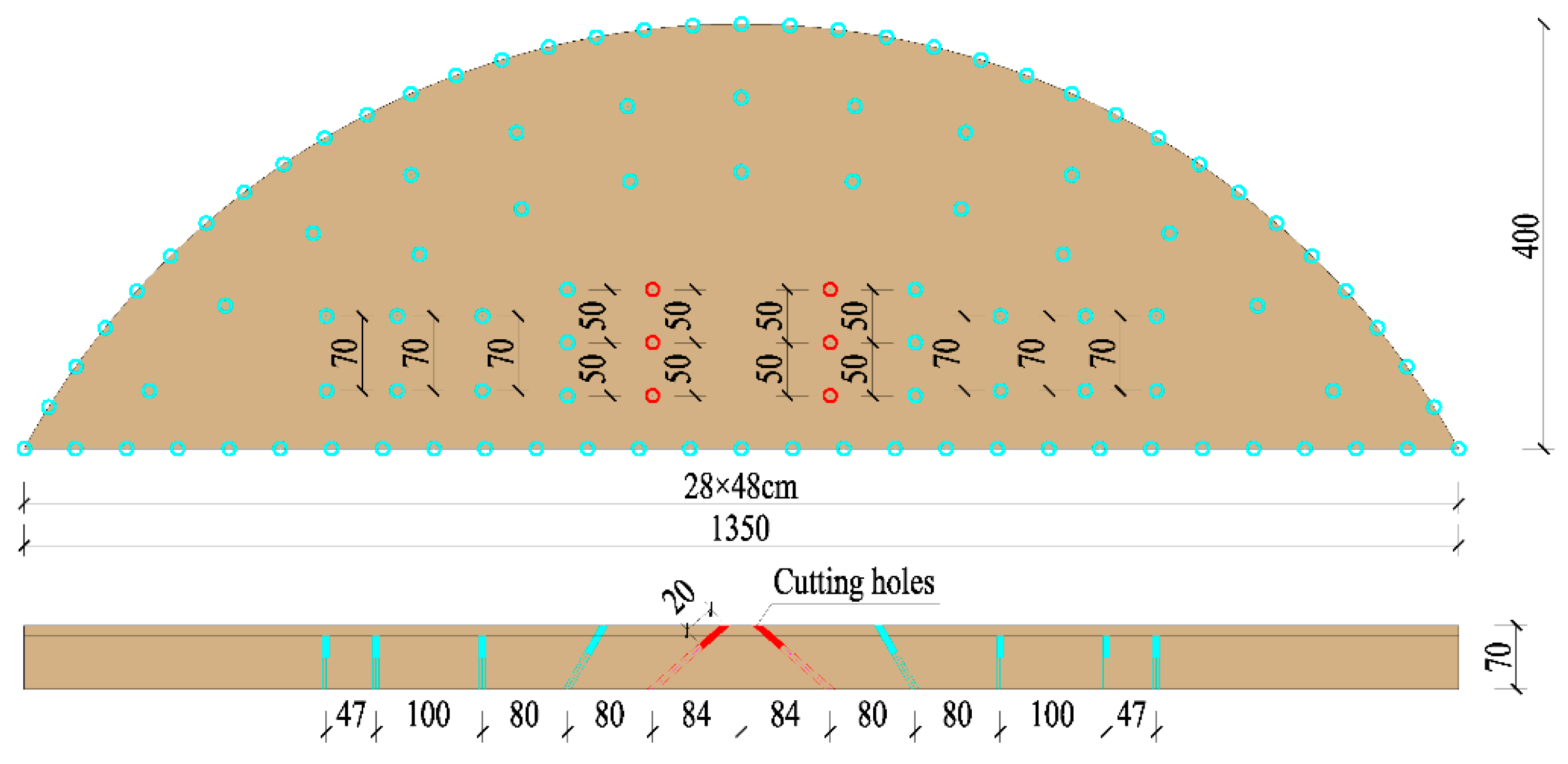
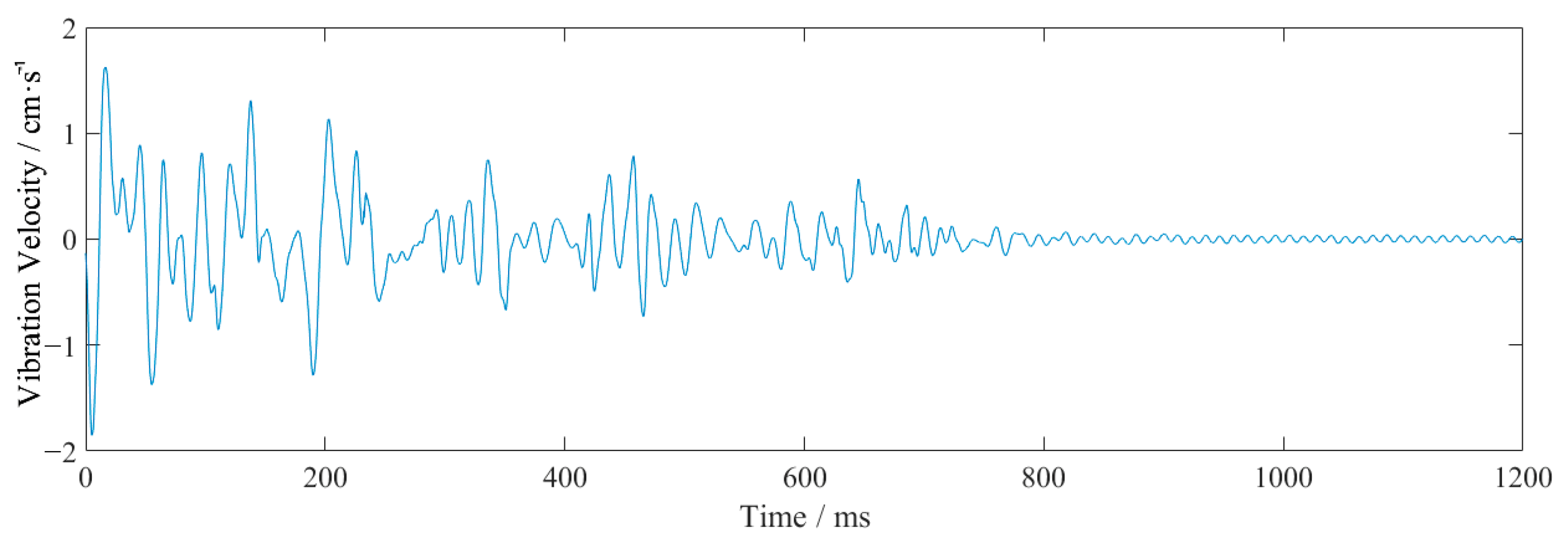


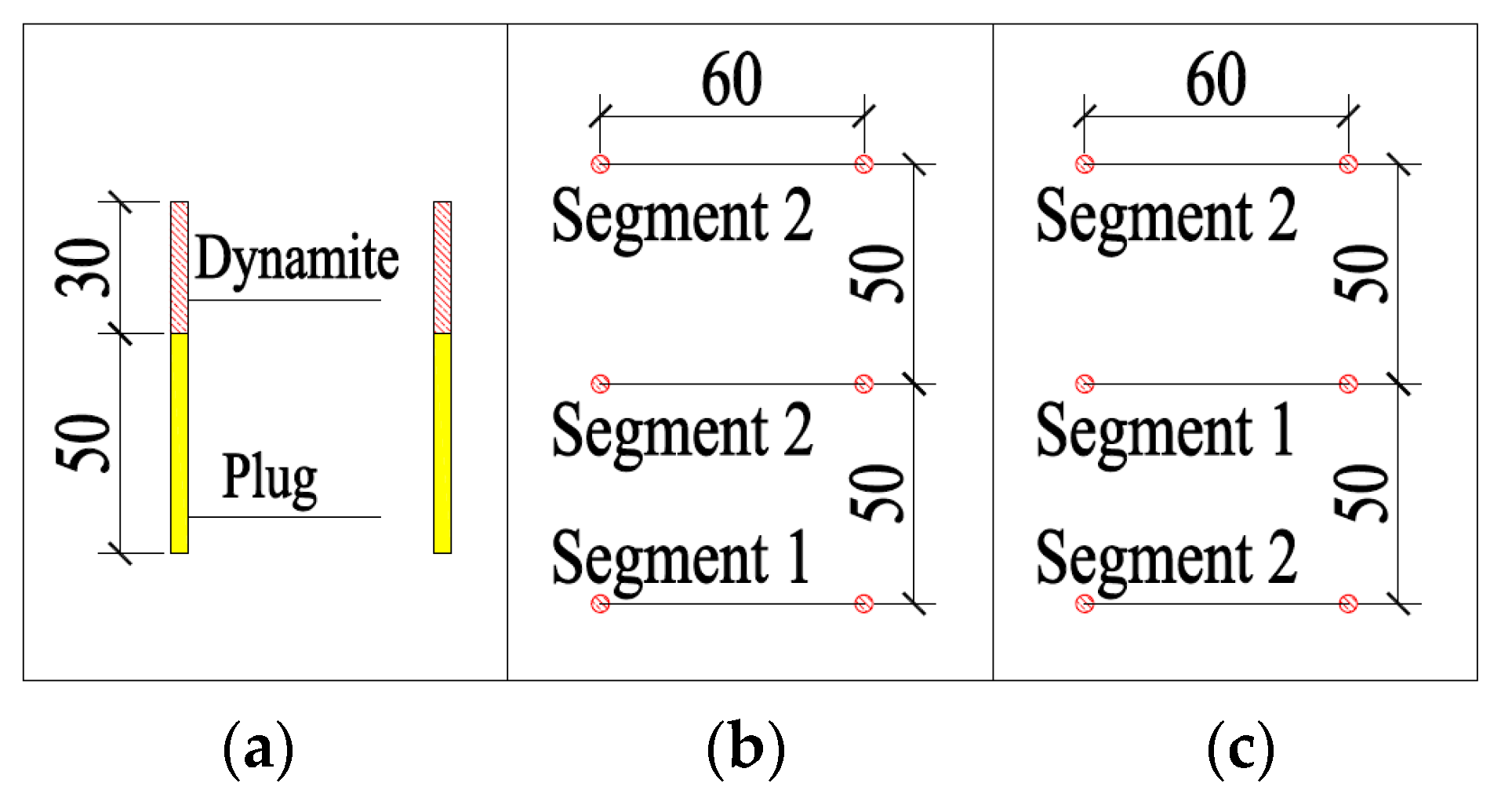
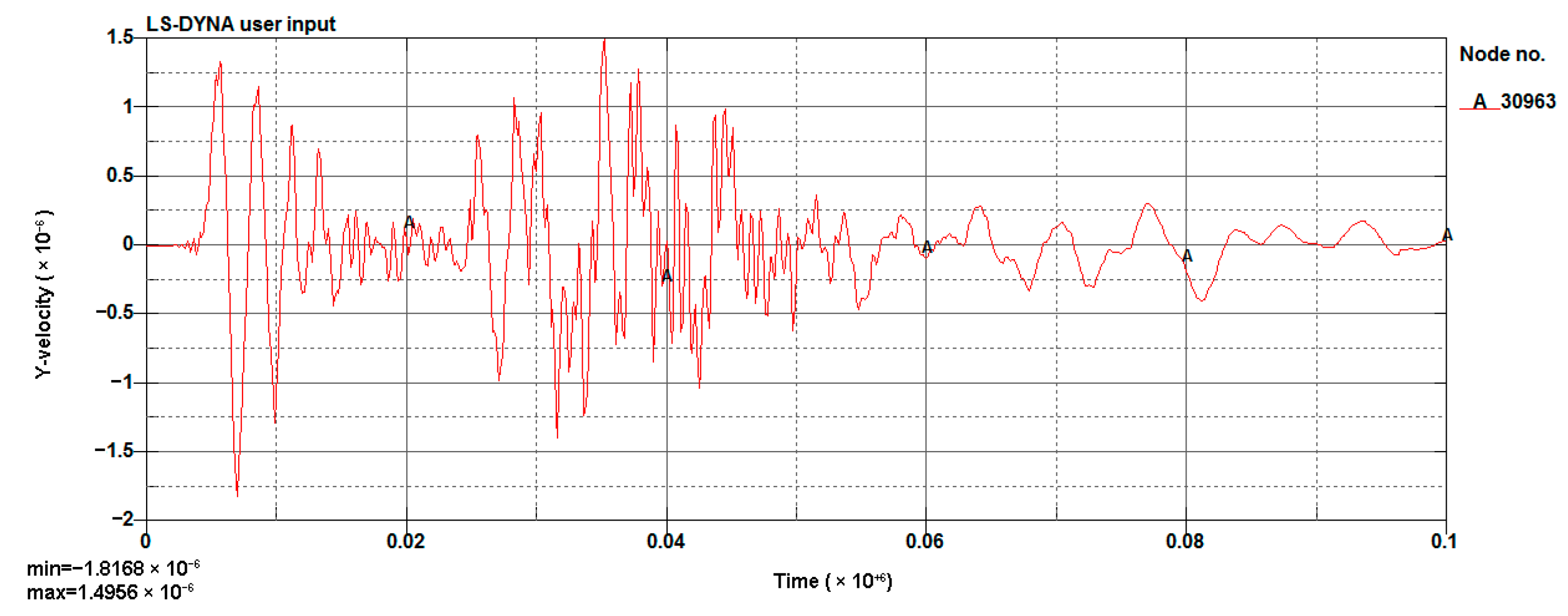
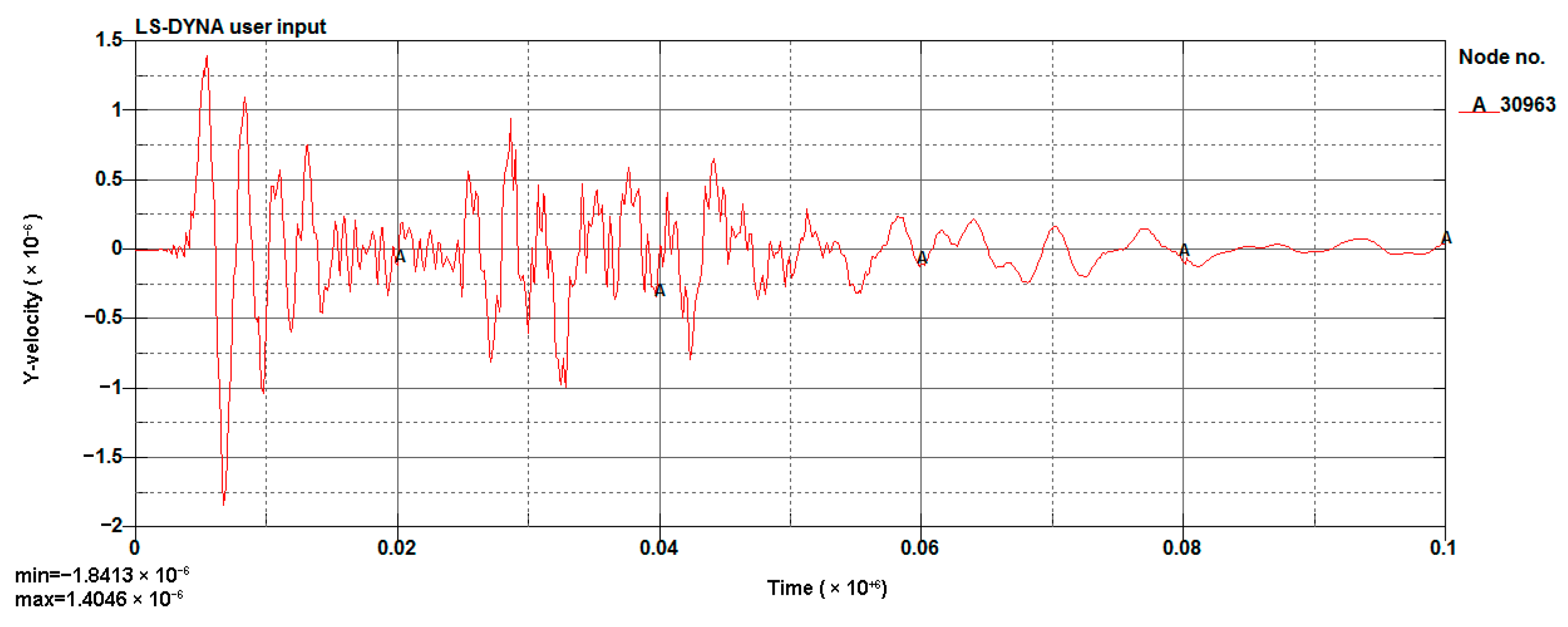

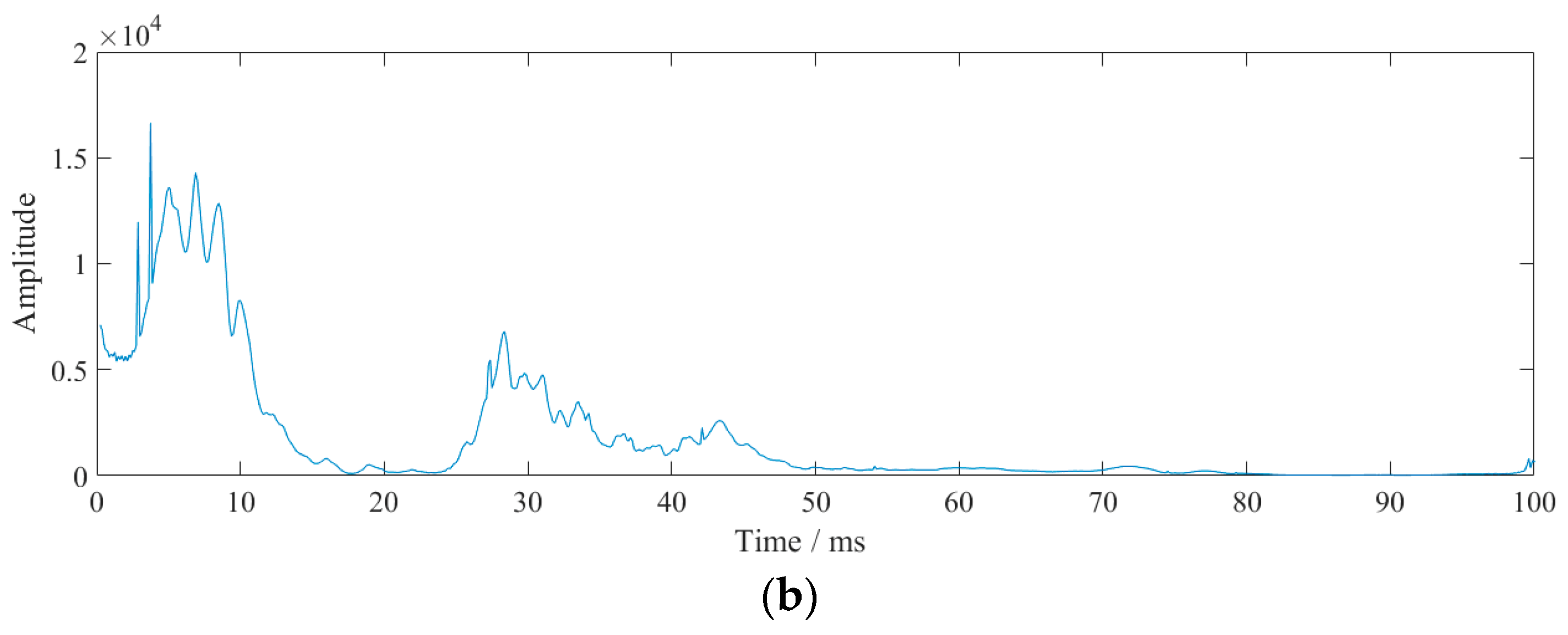
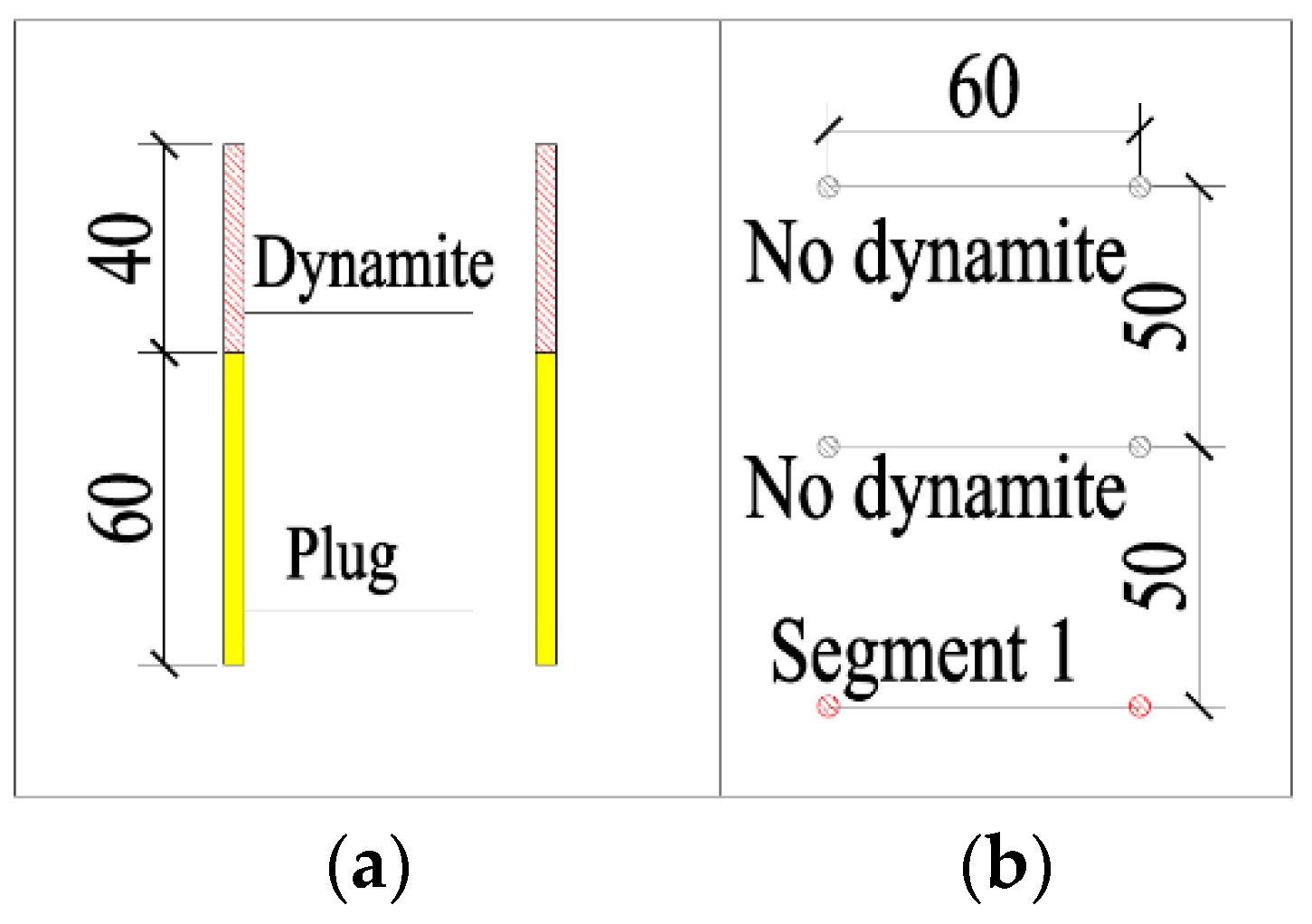
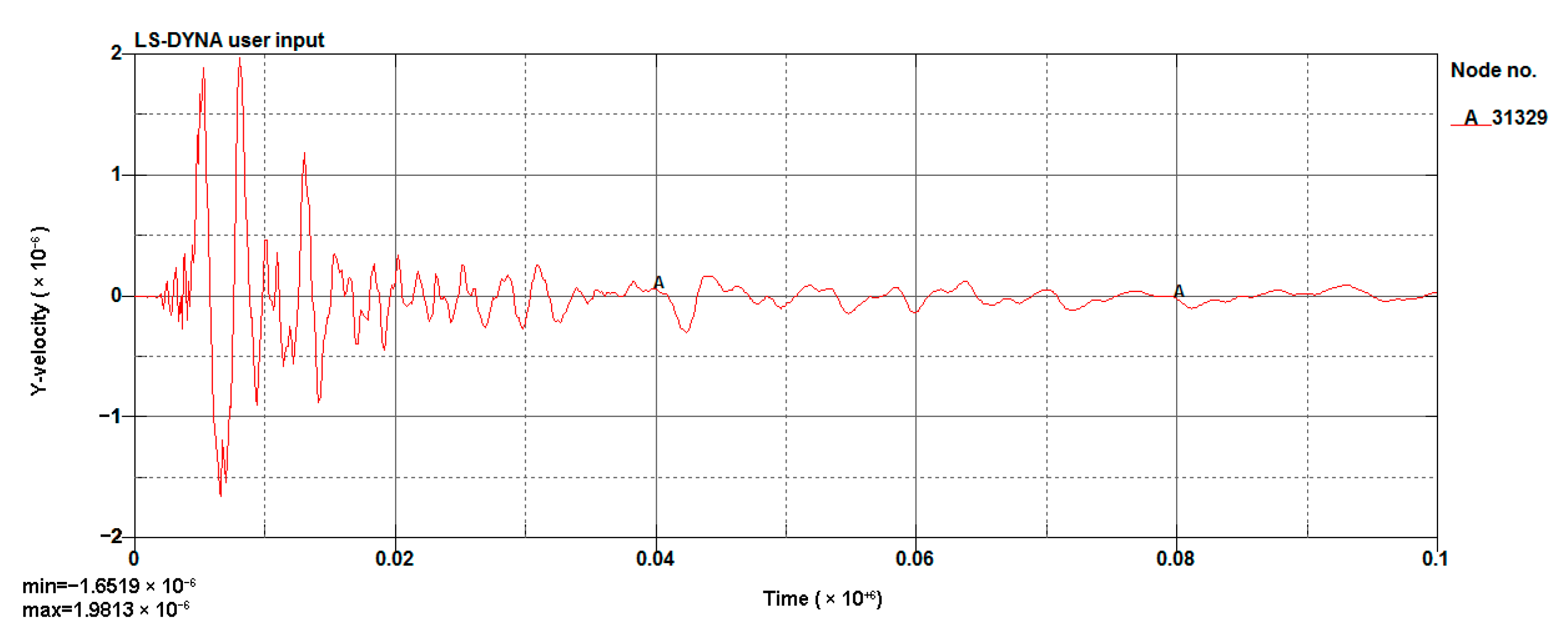

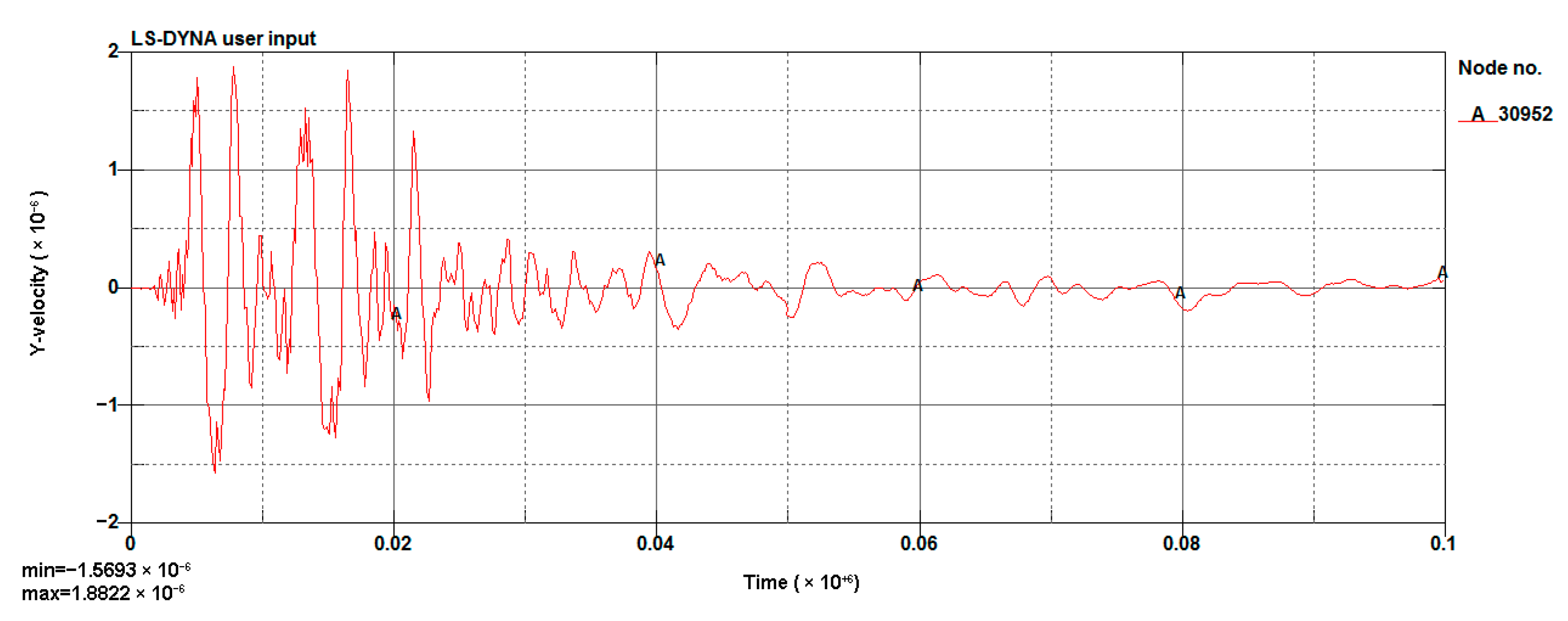
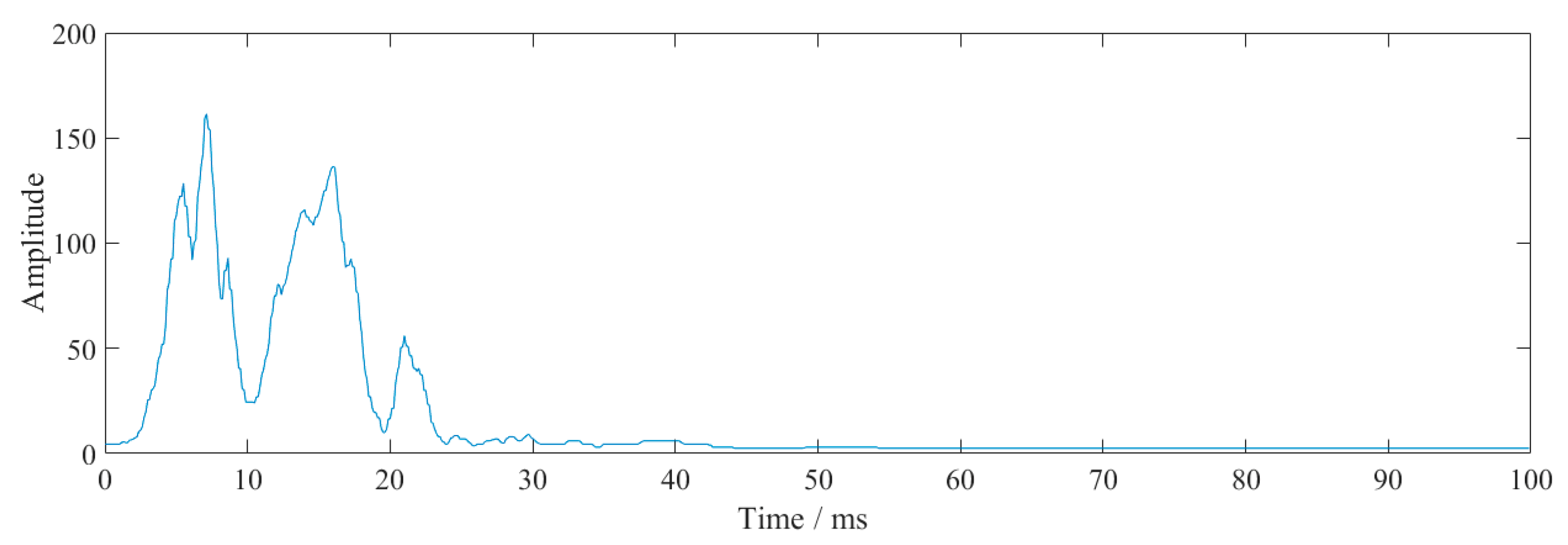
| Category of Holes | Number | Length (m) | Single Hole Charge (kg) | The Segments of Detonators (ms) |
|---|---|---|---|---|
| Cutting holes | 4 | 0.6 | 0.6 | 1 (0 ms) |
| Auxiliary cutting holes | 4 | 0.4 | 0.4 | 3 (50 ms) |
| 4 | 0.2 | 0.2 | 5 (100 ms) | |
| 4 | 0.4 | 0.4 | 7 (200 ms) | |
| 7 | 0.4 | 0.4 | 9 (310 ms) | |
| Tunneling hole | 13 | 0.4 | 0.4 | 11 (460 ms) |
| Periphery holes | 36 | 0.2 | 0.2 | 13 (650 ms) |
| 28 | 0.2 | 0.2 | 15 (880 ms) |
| Monitoring Events | Monitoring Point | Epicentral Distance (m) | Source Depth (m) | Cutting Hole Charge (kg) | Vertical | |
|---|---|---|---|---|---|---|
| Vibration Velocity (cm/s) | Vibration Frequency (Hz) | |||||
| 1 | #1 | 75.00 | 11.90 | 4.2 | 1.206 | 86.957 |
| #2 | 0.00 | 11.79 | 7.548 | 28.571 | ||
| 2 | #1 | 22.50 | 11.90 | 2.4 | 2.143 | 45.455 |
| #2 | 0.00 | 11.21 | 3.186 | 23.256 | ||
| Density g/cm3 | Elastic Modulus GPa | Poisson’s Ratio | Yield Strength MPa | Compressive Strength MPa | Internal Friction Angle° |
|---|---|---|---|---|---|
| 2 | 25 | 0.23 | 75 | 80 | 32 |
| Density g/cm3 | Poisson’s Ratio | Cohesion KPa | Shear Modulus MPA | Internal Friction Angle° |
|---|---|---|---|---|
| 1.86 | 0.35 | 61.2 | 52 | 33.25 |
| Density g/cm3 | Detonation Velocity cm/µs | Detonation Pressure MPa | A MPa | B MPa | R1 | R2 | ω | E MPa | Initial Specific Volume |
|---|---|---|---|---|---|---|---|---|---|
| 1.23 | 0.42 | 0.097 | 2.144 | 1.82 | 1.23 | 0.42 | 0.097 | 2.144 | 1.82 |
| Category of Holes | Number | Length (m) | Single Hole Charge (kg) | The Segments of Detonators (ms) |
|---|---|---|---|---|
| Cutting hole | 6 | 0.2 | 0.2 | 1 (0 ms) |
| Location of Monitoring Points | Vibration Velocity (cm/s) | Vibration Frequency (Hz) | Maximum Vibration Velocity Time (s) | Duration (s) |
|---|---|---|---|---|
| #2 | 1.852 | 36.036 | 0.00513 | 0.7 |
| Monitoring Points | Cutting Hole Charge (kg) | Vibration Velocity (cm/s) | Vibration Frequency (Hz) | Instantaneous Energy |
|---|---|---|---|---|
| #2 at event 1 | 4.2 | 7.584 | 28.571 | 2.5693 × 105 |
| #2 at event 2 | 2.4 | 3.186 | 23.256 | 0.7236 × 105 |
| #2 at event 3 | 1.2 | 1.852 | 36.036 | 0.2235 × 105 |
| 0.6 m footage simulation | 1.2 | 1.919 | -- | 0.2588 × 105 |
Disclaimer/Publisher’s Note: The statements, opinions and data contained in all publications are solely those of the individual author(s) and contributor(s) and not of MDPI and/or the editor(s). MDPI and/or the editor(s) disclaim responsibility for any injury to people or property resulting from any ideas, methods, instructions or products referred to in the content. |
© 2023 by the authors. Licensee MDPI, Basel, Switzerland. This article is an open access article distributed under the terms and conditions of the Creative Commons Attribution (CC BY) license (https://creativecommons.org/licenses/by/4.0/).
Share and Cite
Xu, R.; Zhang, J.; Wu, B.; Zhang, F.-L. Vibration Reduction and Explosion Control Investigation for an Ultra-Shallow Buried Tunnel under Crossing Buildings Based on HHT Analysis. Sensors 2023, 23, 7589. https://doi.org/10.3390/s23177589
Xu R, Zhang J, Wu B, Zhang F-L. Vibration Reduction and Explosion Control Investigation for an Ultra-Shallow Buried Tunnel under Crossing Buildings Based on HHT Analysis. Sensors. 2023; 23(17):7589. https://doi.org/10.3390/s23177589
Chicago/Turabian StyleXu, Rui, Jichun Zhang, Bian Wu, and Feng-Liang Zhang. 2023. "Vibration Reduction and Explosion Control Investigation for an Ultra-Shallow Buried Tunnel under Crossing Buildings Based on HHT Analysis" Sensors 23, no. 17: 7589. https://doi.org/10.3390/s23177589
APA StyleXu, R., Zhang, J., Wu, B., & Zhang, F.-L. (2023). Vibration Reduction and Explosion Control Investigation for an Ultra-Shallow Buried Tunnel under Crossing Buildings Based on HHT Analysis. Sensors, 23(17), 7589. https://doi.org/10.3390/s23177589






